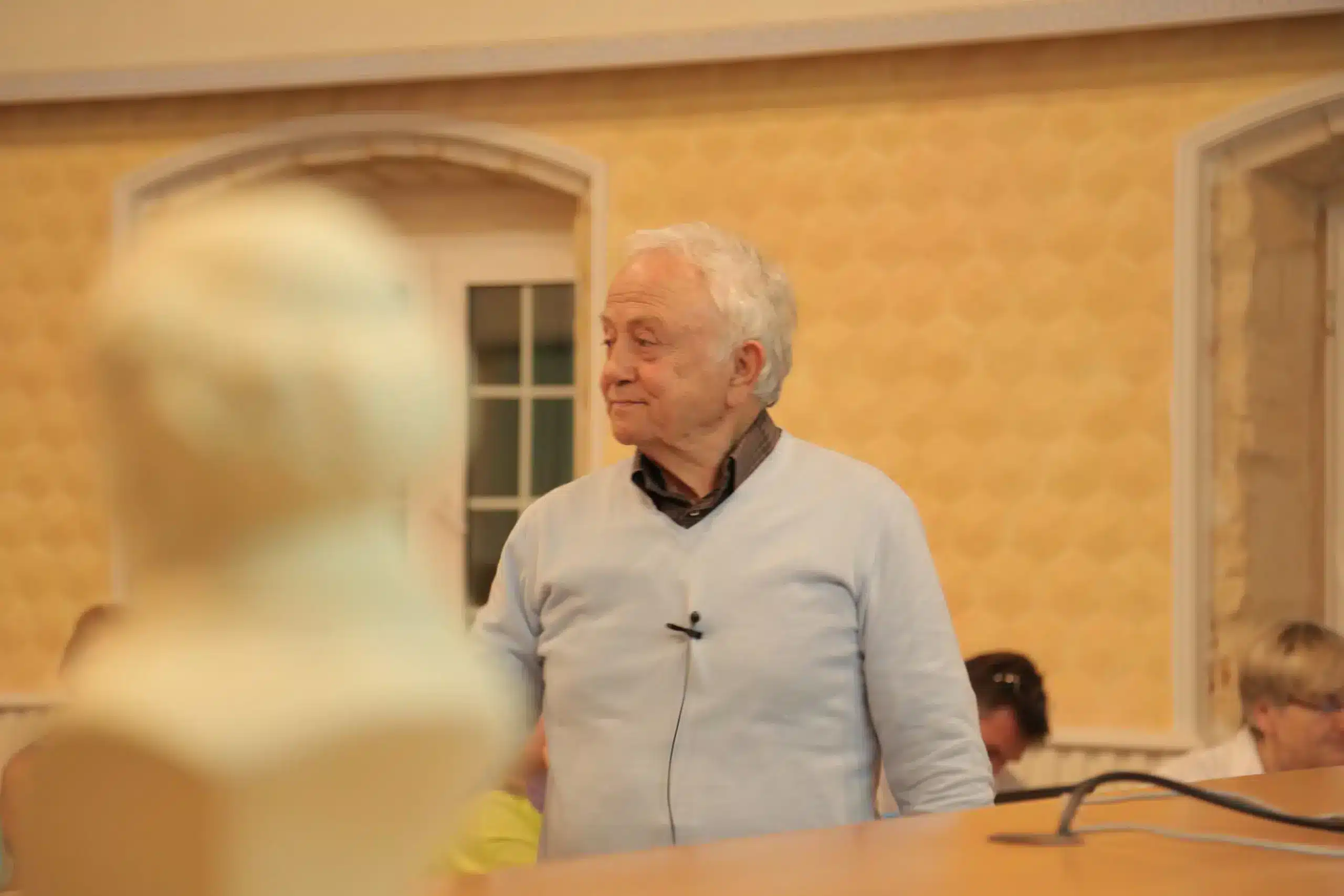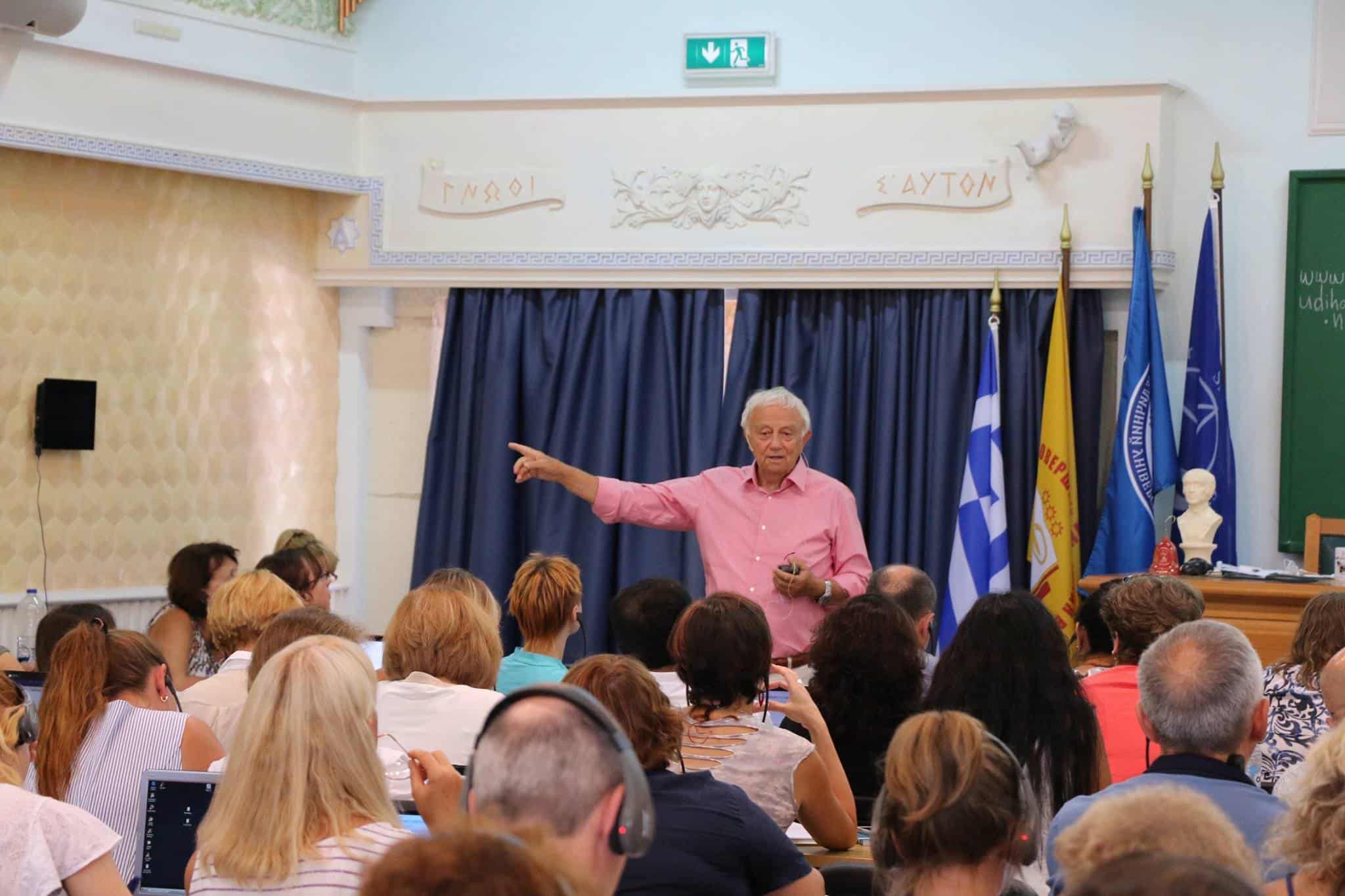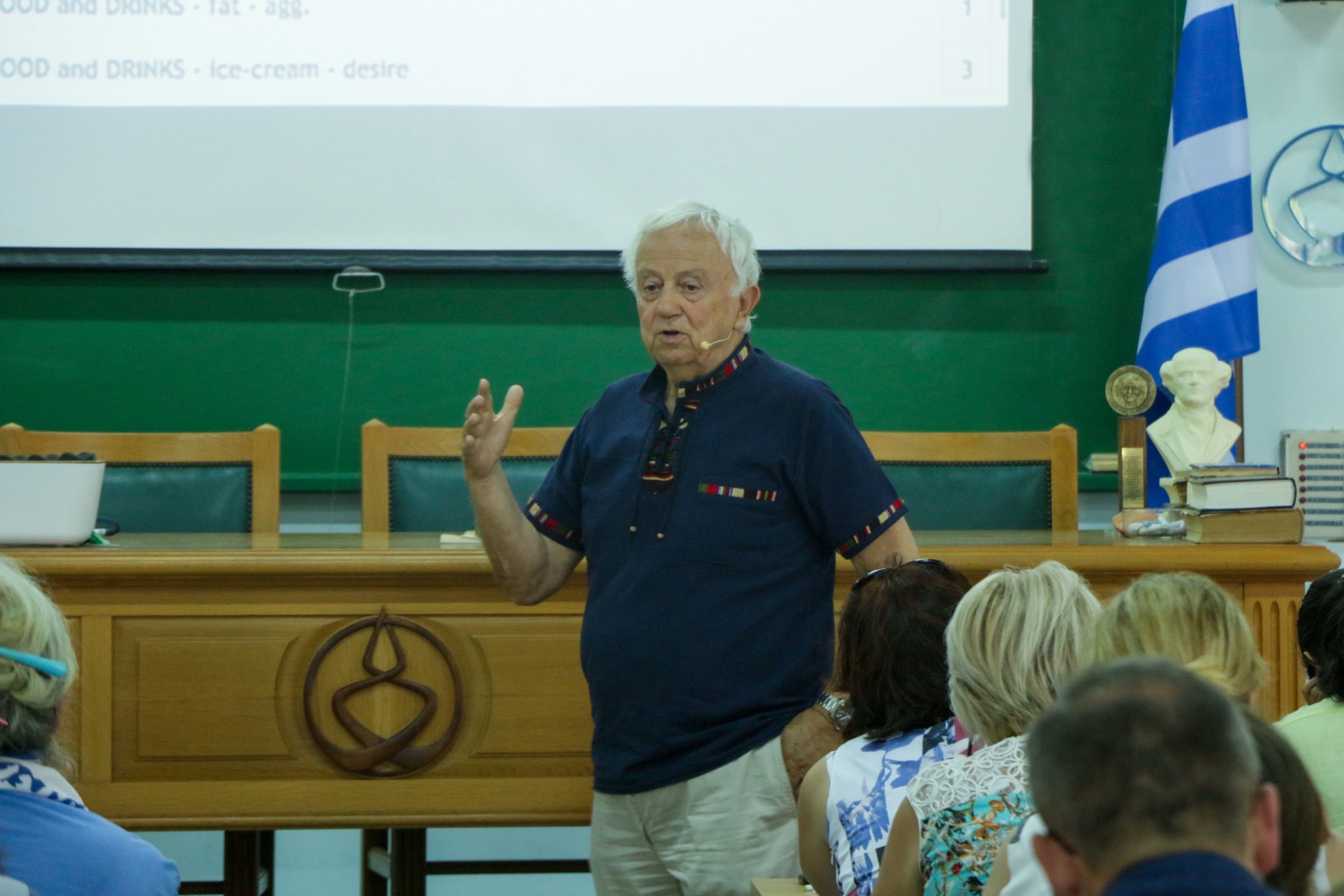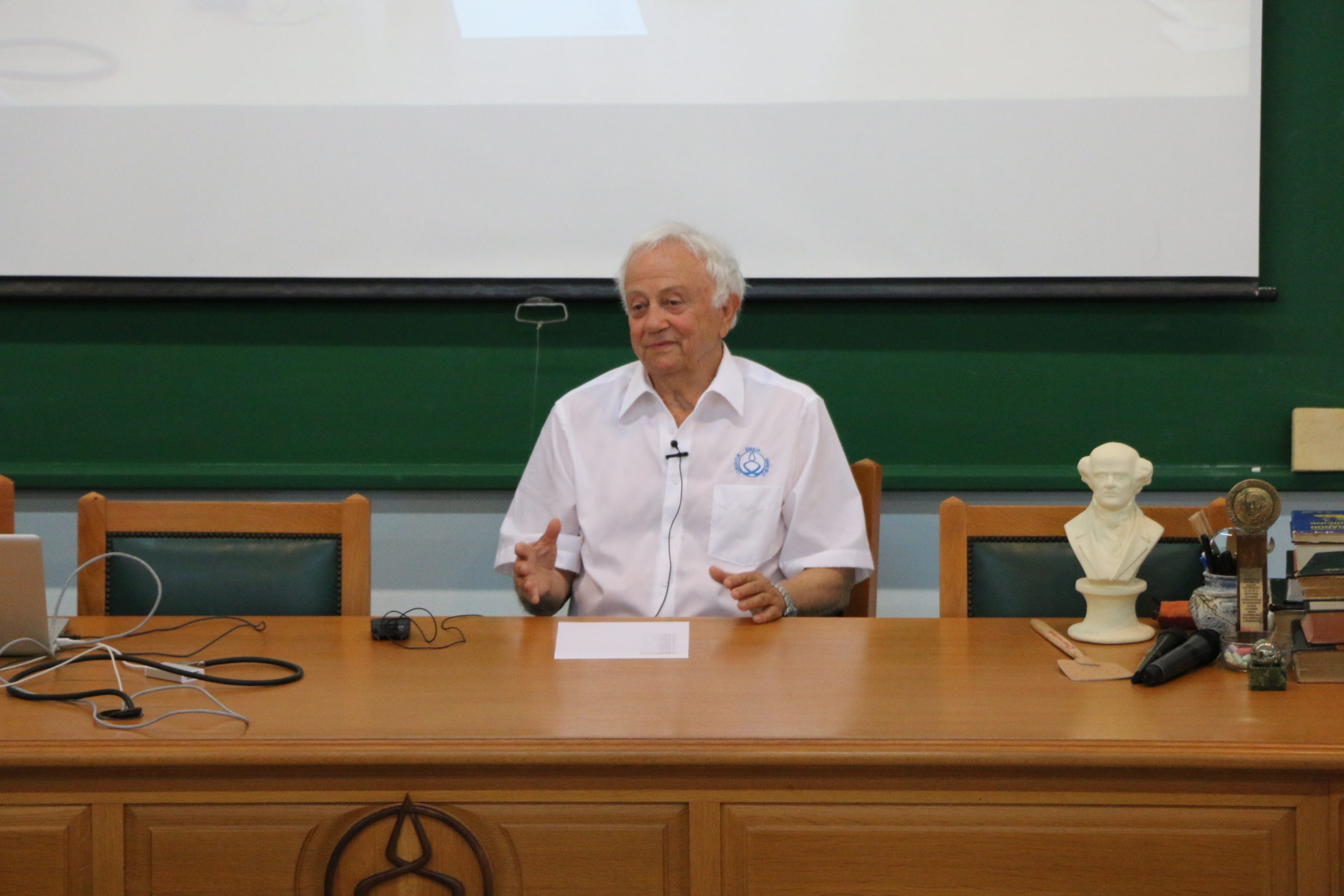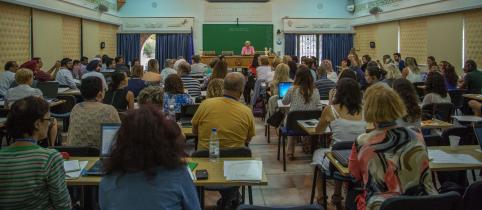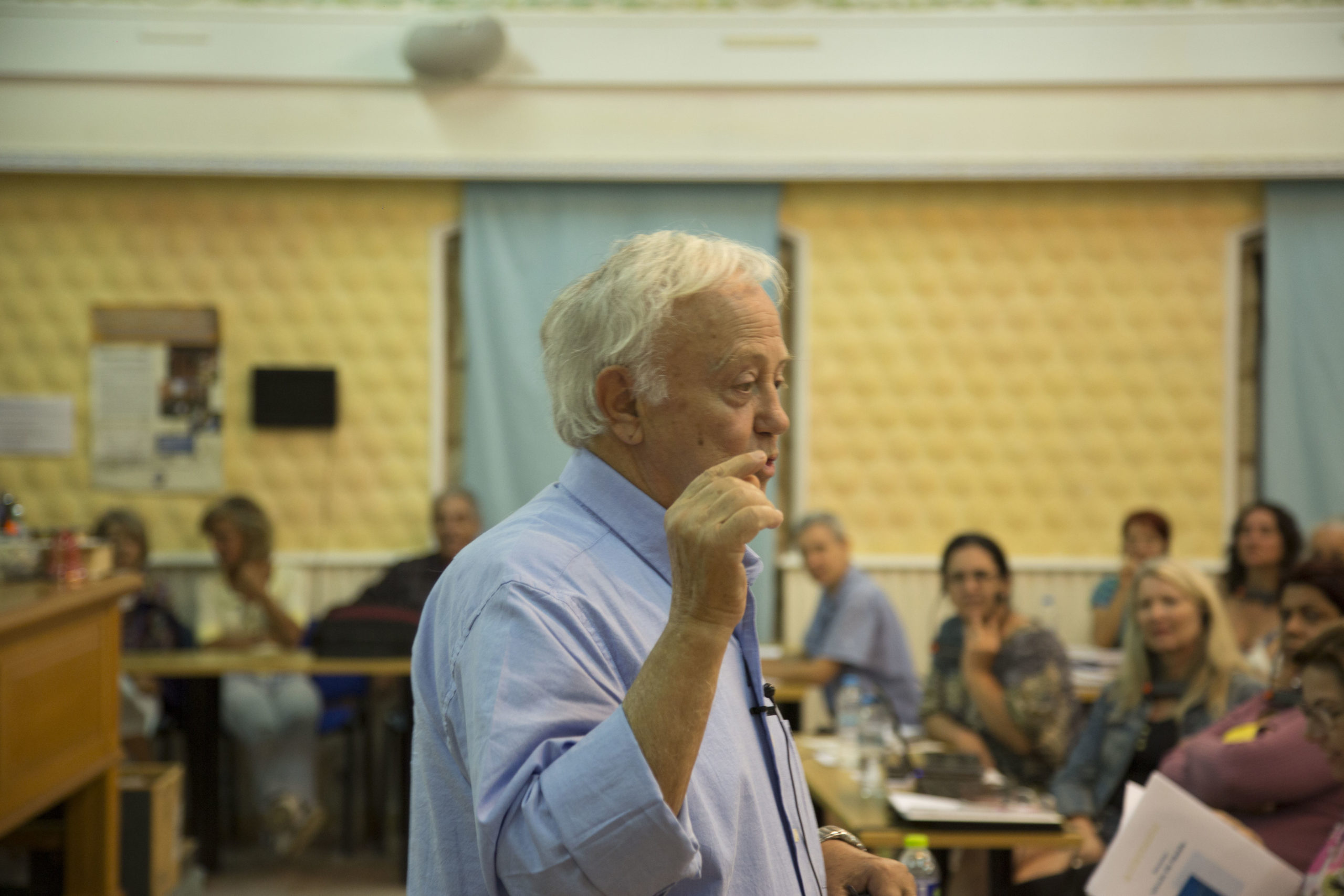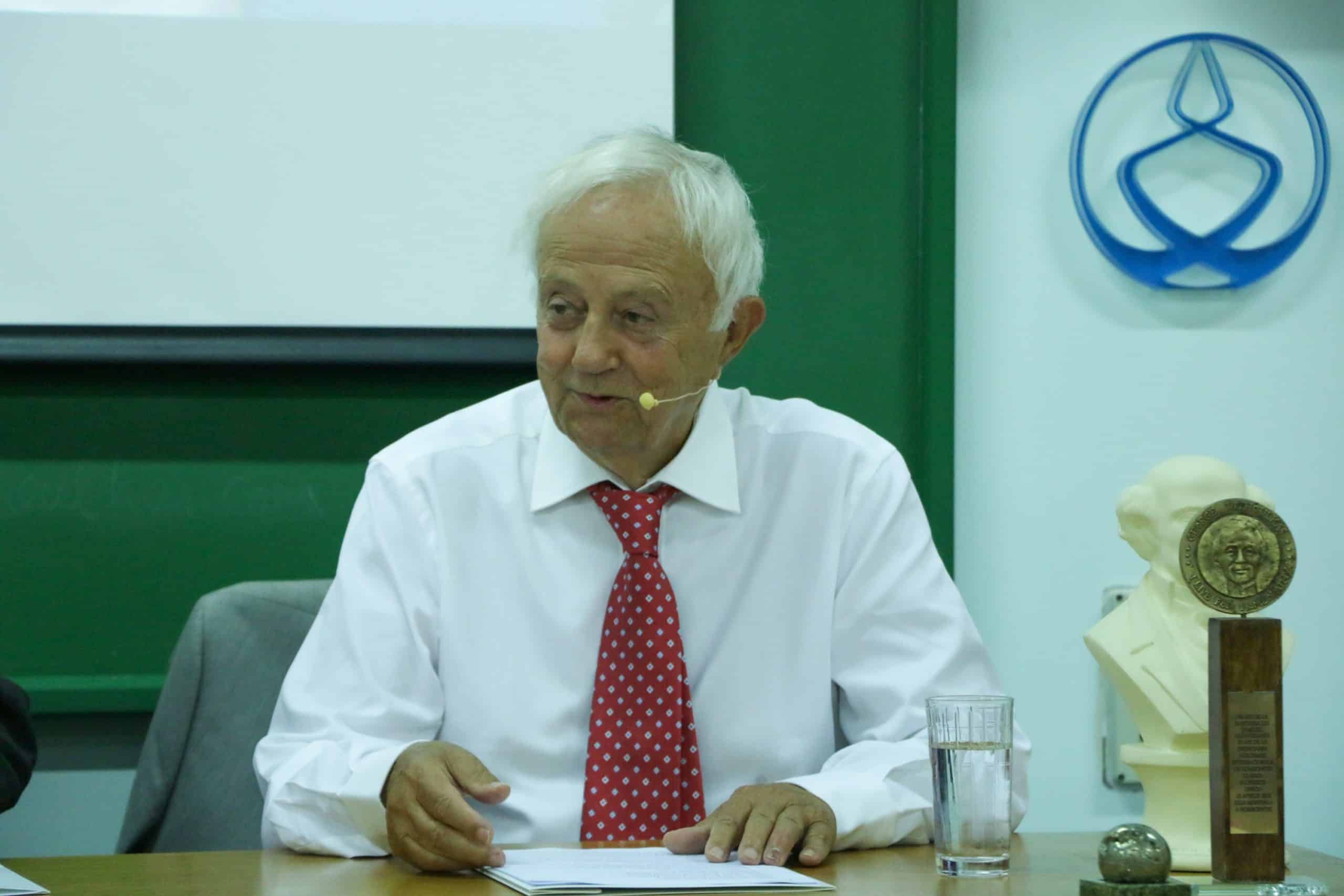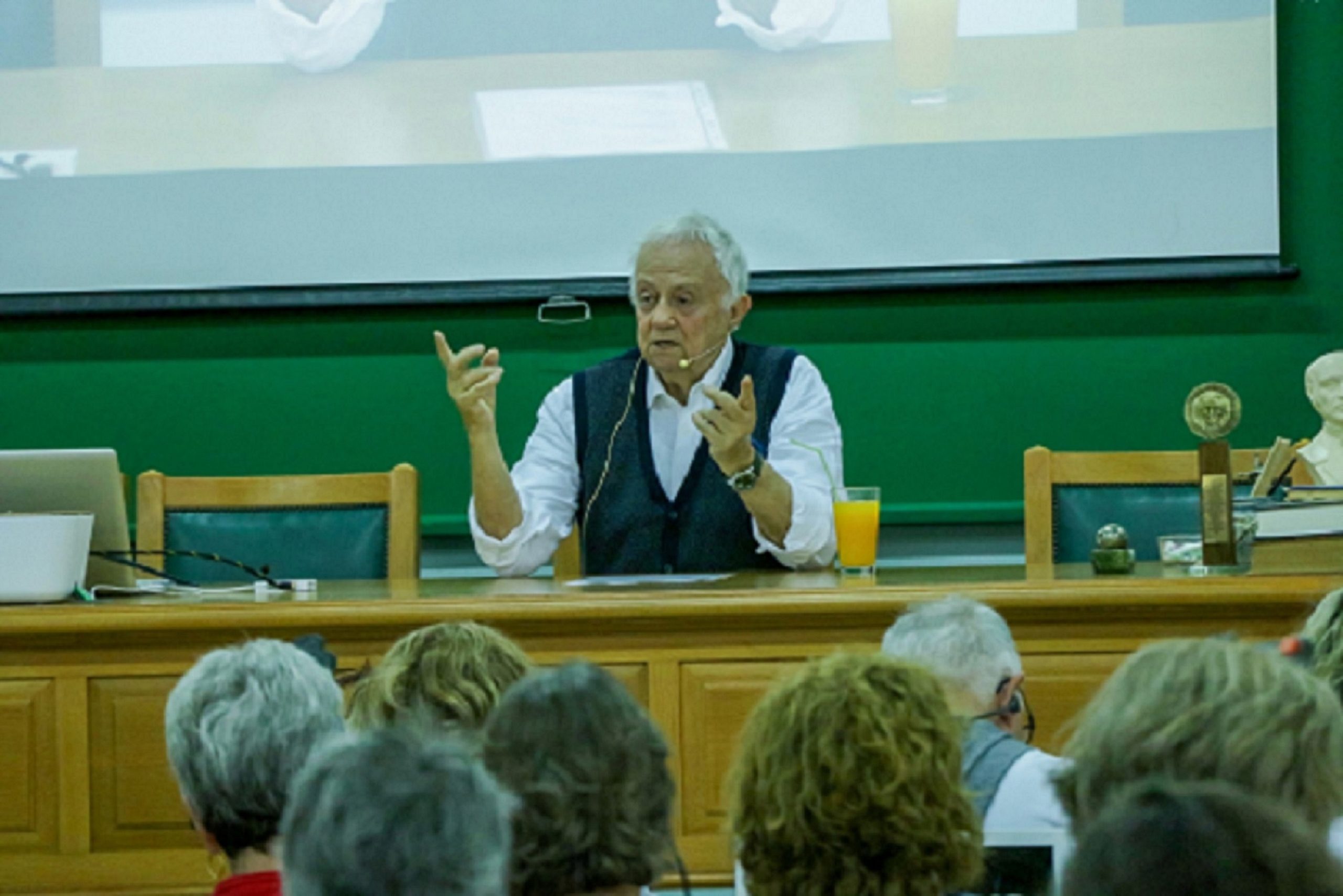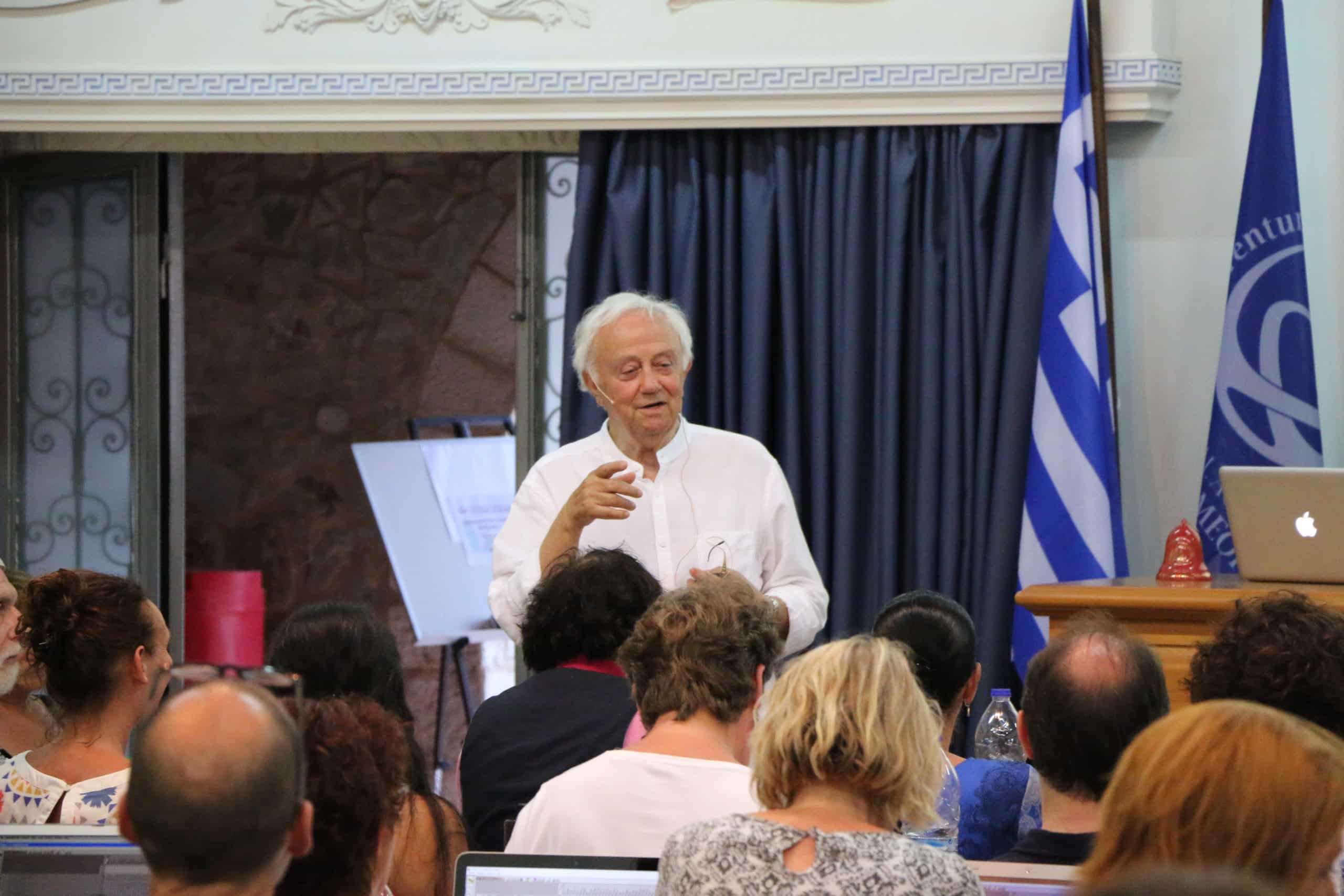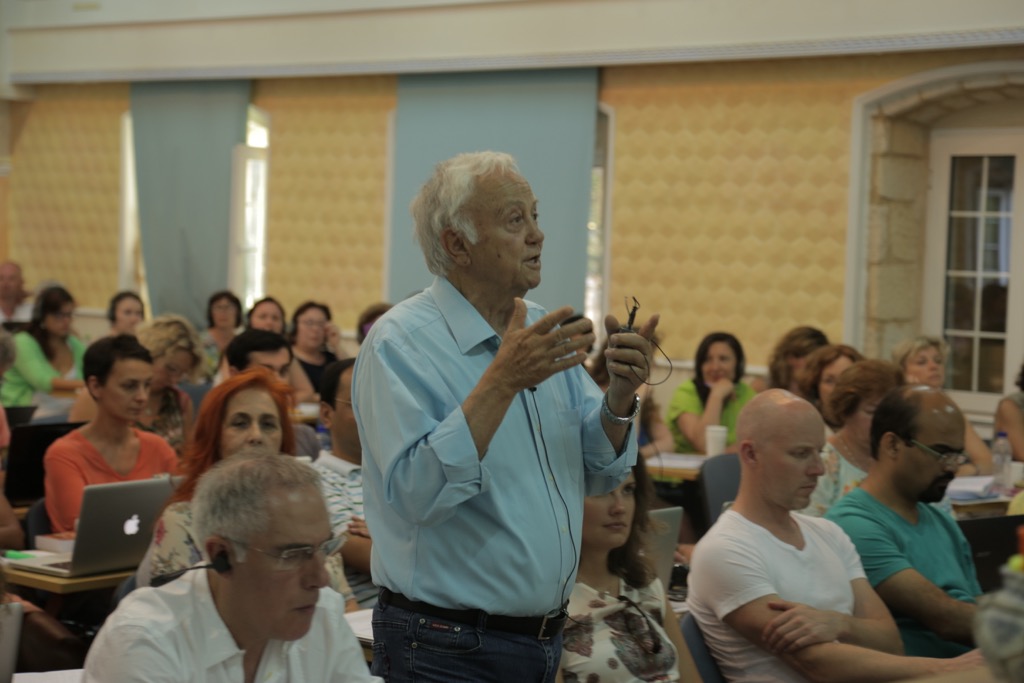Cartesian philosophy has been the central pillar of scientific discovery, and a great benefit for humanity. From locomotive to space shuttle and from penicillin to PET scan, this paradigm has dominated western scientific production for over 400 years. However, the wholesale adoption of Descartes’s worldview has not been without cost. Lost in the shuffle have been many of the subtler aspects of our existence.
Also available in:
Homeopathy (2005) 94, 196–199
r 2005 The Faculty of Homeopathy
doi:10.1016/j.homp.2005.05.004, available online at http://www.sciencedirect.com
CLINICAL
The colour of the homeopathic improvement: The multidimensional nature of the response to homeopathic therapy
M Oberbaum1,✕, SR Singer1 and G Vithoulkas2
1The Center for Integrative Complementary Medicine, Shaare Zedek Medical Center, Jerusalem, Israel
2International Academy of Classical Homeopathy, Alonisos, Greece
Homeopathy differs from conventional medicine in many aspects. Little recognized to date is the unique, multidimensional nature of the response to homeopathic treatment. We discuss this ‘colour’ of the homeopathic response; altered temporal awareness, paucity of language, selective amnesia, lack of self-awareness, the holistic character of the improvement, and the development of acute illnesses, all in response to successful homeopathic treatment. We conclude that, beyond its biological effect, homeopathic treatment affects the awareness. Homeopathy (2005) 94, 196–199.
Keywords: homeopathic improvement; Hering’s law; therapeutic response; multidimensional
Introduction
Cartesian philosophy has been the central pillar of scientific discovery, and a great benefit for humanity. From locomotive to space shuttle and from penicillin to PET scan, this paradigm has dominated western scientific production for over 400 years. However, the wholesale adoption of Descartes’s worldview has not been without cost. Lost in the shuffle have been many of the subtler aspects of our existence.
Homeopathy is a system of medicine based upon the law of similars. It maintains a holistic philosophy of health and illness. In that vein, homeopathy anticipates a subtle and qualitative model of cure and improve- ment. Samuel Hahnemann, the founder of homeop- athy, declared that ‘after careful selection ofysimilar homeopathic medicine, health, recovery, follow in imperceptible, often rapid transitions’,1 and that ‘commencement of amelioration or aggravationy is not perceptible to every oney [and] cannot be described in words’.2 We maintain that this ‘multidimensional’ nature of the homeopathic response has gone largely unrecognized, in no small part due to our prevailing cultural bias towards Cartesian logic.
Multidimensionality
Response to conventional medical treatment is typically measured along a linear, monodimensional scale. This is exemplified by the widespread use of visual analogue scores to quantify subjective response to conventional treatment. Responses are graded by a single digit, lacking ‘volume’, ‘depth’ or scope. Sub- jective experience, while possibly of personal interest to the physician, carries no weight in therapeutic reasoning.
The homeopathic response, by contrast, is charac- terized by subtle changes in the character of symptoms, the patient’s mood, appetite, energy level, and overall well-being, not just the severity of the symptom. Moreover, these changes cannot be judged in isolation: only the overall pattern of changes reveals the nature of the response. The patient’s rash may be exacerbat- ing, but due to improvement in the patient’s mood, relationships and sleep pattern, the diligent homeopath will judge that the patient is proceeding toward cure.
In contrast to the monodimensional measure of conventional improvement, the homeopathic response typically carries ‘colour’: The stitching pain may change to burning, numbness may replace formication, clarity of vision may ensue. The description, ‘cheerful- ness after stool’, beyond curiosity value, has no meaning in conventional medicine. Only resolution of constipation carries therapeutic relevance for the conventional physician. The homeopathic physician, in contrast, would find such a symptom of great practical import, possibly indicating a healing process or the need to change a prescription.
The monodimensional dynamics of conventional medicine is thus traded for a multidimensional one, with appearance of new ‘symptoms’, recurrence of past symptoms, development of symptoms remote to the main complaint, and sweeping changes in the general, mental and emotional spheres.
The emotional improvement of a rheumatoid arthritis patient responding to conventional treatment can only be understood as secondary to the physical improvement. In contrast, the mental or emotional improvement in a patient treated successfully by homeopathy is a separate entity, wholly independent of the physical process. To the contrary: homeopathic patients often improve mentally and emotionally early on, in spite of aggravation of the main complaint.
Hahnemann and Kent both gave instructions for judging the response to homeopathic treatment 3,4 but ‘Hering’s law’ 5 is widely recognized as the yardstick by which to measure homeopathic improvement. We wish to discuss several subtle phenomena observed fre- quently in homeopathic practice but not to the best of our knowledge yet part of the homeopathic literature. The examples below represent actual excerpts from patient interviews. Each represents many similar cases seen during our experience with tens of thousands of patients.
Temporality
Following homeopathic treatment, the patient’s sense of time is frequently impaired. Conventionally treated patients generally recognize when the improve- ment began, ‘Two hours after taking the Vioxx’, ‘Ten days after starting the cipramil’. Homeopathic pa- tients, in contrast, are typically unable to say. ‘When did the headache stop?’ ‘I don’t know exactly. Some- time between Epiphany and Mardi Gras’. Only on more thorough interrogation are they often able to reconstruct the process, frequently with the aid of temporal landmarks.
Metaphor
Homeopathic treatment accentuates the poverty of language. During the homeopathic improvement, patients are typically unable to articulate the permuta- tions they are undergoing. Frequent is the resort to metaphor (‘as if’) to explain these changes. In fact, whole volumes of repertory are devoted to ‘Sensations As If’.6 Conventional medicine also recognizes meta- phor (‘as if a sack of potatoes was sitting on my chest’), but only in specific, time-honoured circumstances, not in the spontaneous manner recognized in homeopathy. We propose that the limitation rests not with the patients, nor their physicians, but with the inability of language to express such nuances. Whereas conven- tional medicine is little hindered by this limitation, homeopaths must remain aware that language is an imperfect conduit for expressing the full gamut of human experience.
Amnesia
Homeopathic patients typically undergo ‘selective amnesia’, particularly toward secondary complaints. These complaints, well documented in the patient file, are completely forgotten. ‘I didn’t suffer from nausea before the menses!’ the patient will protest, only to reconsider, ‘Well, it was getting better anywayy’. The repudiation is so heart-felt that we sense not only that the complaint has disappeared, but that all memory of the episode has been obliterated.
A corollary to this is what we term the ‘Oh yeah!’ phenomenon. The patient is asked if anything had been changed since the remedy. ‘No’ is frequently the answer. ‘And what about the headaches you com- plained about’? ‘Oh yeah! That went away’. ‘And the ringing in ears?’ ‘Oh yeah! I’d forgotten about that’.
Holism
Conventional patients frequently experience general or emotional improvement, secondary to improvement in their main complain.
Homeopathic patients often share this interpreta- tion: ‘My mood is better since my colitis went away’. ‘I have more energy since my blood pressure rose’. ‘I’m sleeping better because I’m breathing more freely’. No doubt physical improvement contributes to overall well-being, however homeopaths frequently observe overall improvement far beyond what could be anticipated secondary to mere physical amelioration.
‘Changes’ in the environment
Patients treated homeopathically frequent attribute improvements in their general, mental and emotional well-being to changes in their environment. ‘My asthma improved, but there’s been no change emo- tionally or mentally’. ‘What about your relationship with your husband? Last time, you complained that he was driving you crazyy’—the homeopath will ask. ‘Well, you know, it’s interesting. Since my last visit, he has totally changed. He’s calmer, kinder, and more attentive to my needs’. ‘And what about your boss? ‘Now that you mention it, she’s changed too. She’s more appreciative of my work, and has even offered me a big project.y’. The patient perceives the change not in herself but in her environment, unlikely as it may seem.
Acute Illnesses
Chronically ill patients frequently respond to suc- cessful homeopathic treatment with an acute illness. Even patients who, though chronically ill, have been free from acute disease for years will, to their great surprise, suddenly develop fever or other acute afflictions. ‘You’re right doctor, my arthritis has improved, and I am also much better emotionally. But I hadn’t had a fever for years! Since I started your treatment I’ve been sick twice!’ The homeopath must realize that this is not a negative development but rather a step on the road to cure.
Interpretation
We submit that our firm cultural grounding in Cartesian logic blinds us to subtle alterations in health and renders us incapable of correlating seemingly disparate processes. Homeopaths are not immune to this cultural influence, though it would be hoped that homeopathic training would to some extent mitigate this effect.
One may certainly ask, ‘What is the import of these minutiae?’
The importance lies, first and foremost, in the homeopathic interaction. Homeopaths unaware of these subtleties may misinterpret their patients’ reac- tions to therapy and fail to respond appropriately. Patients frequently present at follow-up declaring that ‘nothing has changed’, only to discover that much indeed has. After receiving homeopathic treatment, a patient claiming that ‘only my environment has changed’, or denying ever complaining of a documen- ted symptom, is probably responding well. A patient with a ‘monodimensional’ aggravation but multi- dimensional improvement is most likely on the road to cure, though he or his physician may be concerned. On the other hand, a patient expressing a clinical improvement but no ‘colour’ is likely to be experien- cing a short-lived placebo effect.
A corollary to this lack of awareness on the part of the patient is a lack of gratitude. Homeopaths’ greatest successes often go unrecognized.
The second important implication of these observa- tions rests in their relevance to homeopathic research. We suspect that many of homeopathy’s failures in clinical trials stem from a lack of attentiveness to this ‘unconventional’ response. Clinical trails measure specific, monodimensional primary and secondary endpoints, missing many of the more subtle, indivi- dualized aspects of the homeopathic reaction. Arnica montana is a case in point.
Arnica is homeopathy’s leading anti-traumatic re- medy, and one of the few which can be applied on the basis of a simple indication, regardless of the ‘totality
of symptoms’. This makes Arnica particularly suitable for randomized, blinded clinical trials. Anecdotal accounts of Arnica’s success in trauma are numerous. However, Ernst and Pittler recently reviewed eight such trials 7 and, to the surprise of many homeopaths, did not find Arnica superior to placebo. We offer two explanations for the disappointing study results.
One is the flawed experimental model. Arnica is homeopathically indicated for blunt trauma, not surgical incisions, the model used in most of these trials. We believe studies examining its utility in blunt injury would yield more favorable results.8 Our second explanation relates to the subject of this paper. Monodimensional evaluation, the type most com- monly used in clinical trials, misses the multifarious nature of homeopathic improvement. A patient’s swelling may be temporarily exacerbated (monodimen- sional), but his mood exuberant (multidimensional). The bleeding time may indeed be abnormal, but function rapidly returning. We submit that holistic measures such as well-being, mood, energy levels and attitude, in conjunction with traditional measures such as bleeding and coagulation time would better represent the multidimensional nature of the homeo- pathic improvement than these traditional measures
alone.
In recent years, a growing body of literature has addressed the question of the scientific evaluation of CAM, with an eye toward multidimensional out- comes.9–15 We highlight additional burdens to be overcome in the development of adequate outcome measures of homeopathic therapy.
Conclusion
Aphorism 2 of Hahnemann’s Organon of Medicine describes the highest ideal of cure as ‘rapid, gentle and permanent restoration of the health’. We extend the interpretation of the word ‘gentle’ to include mildness, subtlety and imperceptibility. Our descriptions of patients mistiming, inability to explain, forgetting completely, or attributing changes to the environment, leaves us with the impression that such symptoms have been ‘deleted from the hard-disc’. In fact, the patient’s complaints have transmuted, contemporaneous with a change in himself. From his morphed vantage point, his transfigured health seems natural, unremarkable as the morning sun.
Medicine sees in ‘Restitutio ad integrum’, complete restitution, the highest ideal of cure. We feel that homeopathy goes one step further, erasing the disease not only from the organism, but from awareness.
References
1 Hahnemann SC. Organon of Medicine, 6th ed. New Delhi: B. Jain Publishers, 1995 aphorism 148.
- Hahnemann SC. Organon of Medicine, 6th ed. New Delhi: B. Jain Publishers, 1995 aphorism 253.
-
Hahnemann SC. The medicine of experience. In: The Lesser Writings of Samuel Hahnemann. New Delhi: B. Jain Publishers; 1995.
-
Kent JT. Lecture 35: Prognosis after observing the action of the remedy. in: Kent JT editor. Lectures on Homeopathic Philosophy. New Delhi: B. Jain Publishers, 1991.
-
Hering C. Hahnemann’s three rules concerning the rank of symptoms. Hahnemannian Monthly 1865; 1: 5–12.
-
Roberts HA. Sensations As If. New Delhi: B. Jain Publishers, 1993.
-
Ernst E, Pittler MH. Efficacy of homeopathic arnica: a systematic review of placebo- controlled clinical trial. Arch Surg 1998; 133: 1187–1190.
-
Oberbaum M, Galoyan N, Lerner-Geva L et al. The effect of the homeopathic remedies Arnica montana and Bellis perennis on mild post-partum bleeding—a randomized, double-blind, placebo-controlled study–preliminary results, submitted for publication.
-
Bell IR, Koithan M, Gorman MM, Baldwin CM. Homeo- pathic practitioner views of changes in patients undergoing constitutional treatment for chronic disease. J Altern Comp Med 2003; 9: 39–50.
-
Gould A, MacPherson H. Patient perspectives on outcomes after treatment with acupuncture. J Altern Comp Med 2001; 7: 261–268.
-
Paterson C, Britten N. Acupuncture for people with chronic illness: combining qualitative and quantitative outcome assessment. J Altern Comp Med 2003; 9: 671–681.
-
Paterson C, Britten N. Acupuncture as a complex intervention: a holistic model. J Altern Comp Med 2004; 10: 791–801.
-
Schulman D. The unexpected outcomes of acupuncture: case reports in support of refocusing research designs. J Altern Comp Med 2004; 10: 785–789.
-
Thompson TD. Can the caged bird sing? Reflections on the application of qualitative research methods to case study design in homeopathic medicine. BMC Med Res Methodol 2004; 4: 4 http://www.biomedcentral.com/content/pdf/1471- 2288-4-4.pdf. (last accessed: 10.4.05).
-
Verhoef MJ, Casebeer AL, Hilsden RJ. Assessing efficacy of complementary medicine: adding qualitative research methods to the ‘‘Gold Standard’’. J Altern Comp Med 2002; 8: 275–281.
Correspondence: Menachem Oberbaum, The Center for Integrative Complementary Medicine, Shaare Zedek Medical Center, Jerusalem, Israel.
E-mail: oberbaum@szmc.org.il
Received 11 October 2004; revised 14 March 2005; accepted 9
May 2005


